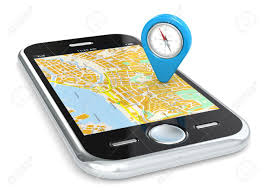
Dear Ms. Smartphone: Do you think it’s ok for me to take a job driving Uber or Lyft even though I have a horrible sense of direction? I feel turned around and get lost very easily. My family always makes fun of this and acts surprised if I show up on time! I’ll have to use my smartphone for my bad sense of direction, but I am a safe driver with no accidents and could use the extra money. Larissa
Dear Larissa: Here’s a relevant story for all ridehail drivers and delivery people handed down by the black-cab drivers in London, England. Since 1865, these drivers have been required to memorize all roads and landmarks within a six mile radius of a central landmark, called Charing Cross. A written exam, known as the Knowledge, can include questions about more than 25,000 public roads! Two interesting factoids about the Knowledge. First, it takes about four years to learn this vast road network. The London cabbies who succeed have been studied with MRI brain scans. It turns out that region of their brains that is responsible for spatial memory is more developed than average. Second, in the U.K., since 2010, the number of people signing up for the Knowledge has dropped by 95%; that of course coincides with the new-found knowledge to get turn-by-turn-directions on the mobile phone.
There are a couple of take-ways from the Knowledge which should give you encouragement for your new career. A part of the memory system encompasses not just roads but also familiar landmarks. You might focus your preparation by locating landmarks such as a famous bridge, town hall, or the local library. Literally draw a map on paper and sketch in those landmarks. Then connect the dots, so to speak, by adding in some of the connecting roads. As you get more experienced, this home-made map, and your mental one- will grow.
Also be kind to yourself because spatial memory does not develop overnight. In the English study, the spatial memory of the drivers changed over several years as they became more experienced. It’s fascinating that our brains are so flexible and responsive. Chances are your sense of direction and spatial memory will improve too once you start driving more.
Get Lost!
I always talk to my Uber and Lyft drivers and have never encountered one who complained about getting lost. It’s surprising since many come from out of town to drive and are not familiar with local streets. They just depend on the phone. That said, I have encountered a few who get uncomfortable driving in tunnels because their mobile phone loses the signal. Get familiar with the areas where cellular service drops off, and study the maps and routing ahead of time. At times there will also be detours, and that’s another occasion when the GPS routing may fail you.
As a learning tool for your sense of direction, consider installing a small compass in your car. It should be readily in sight. Although the phone has a built-in one, glancing at the compass should help you sense where you are headed, particularly if you think about it in relation to those landmarks. If the GPS cut off for some reason, you might be able to head towards your destination, identifying landmarks along the way.
Do This Not That:
If you seek to navigate safely, don’t follow the habit of some Uber and Lyft drivers and wear earphones as you drive. I discourage you from using these for a number of reasons: they are illegal to use while driving, they are discourteous to the passengers you will pick up, and they reduce the warning signals you need to hear from other drivers and from emergency vehicles.
As you get ready to start this new job, here are two final thoughts. Don’t set up a self-fulfilling prophecy that makes you think you will fail because you do not have a good sense of direction. Once you start driving you will probably keep within a few neighborhoods and get to know them better. Also remember, there is no single route or single way to travel. Navigation systems are very forgiving when it comes to routing you. Even when you miss a turn or an exit, they will do recalculate a new optimal route, so there is no need to make rash last-second lane changes or illegal turns. Good luck!
